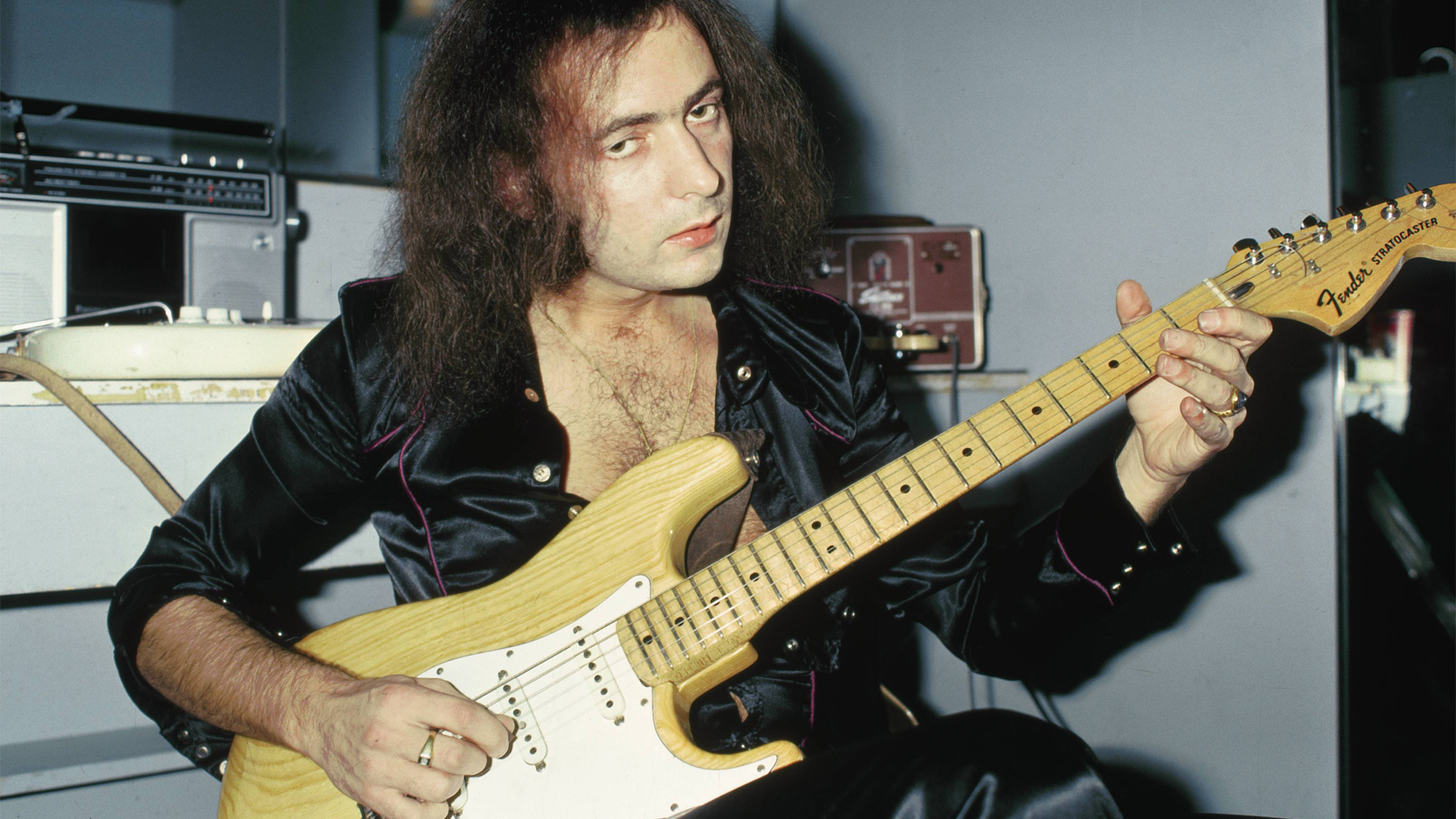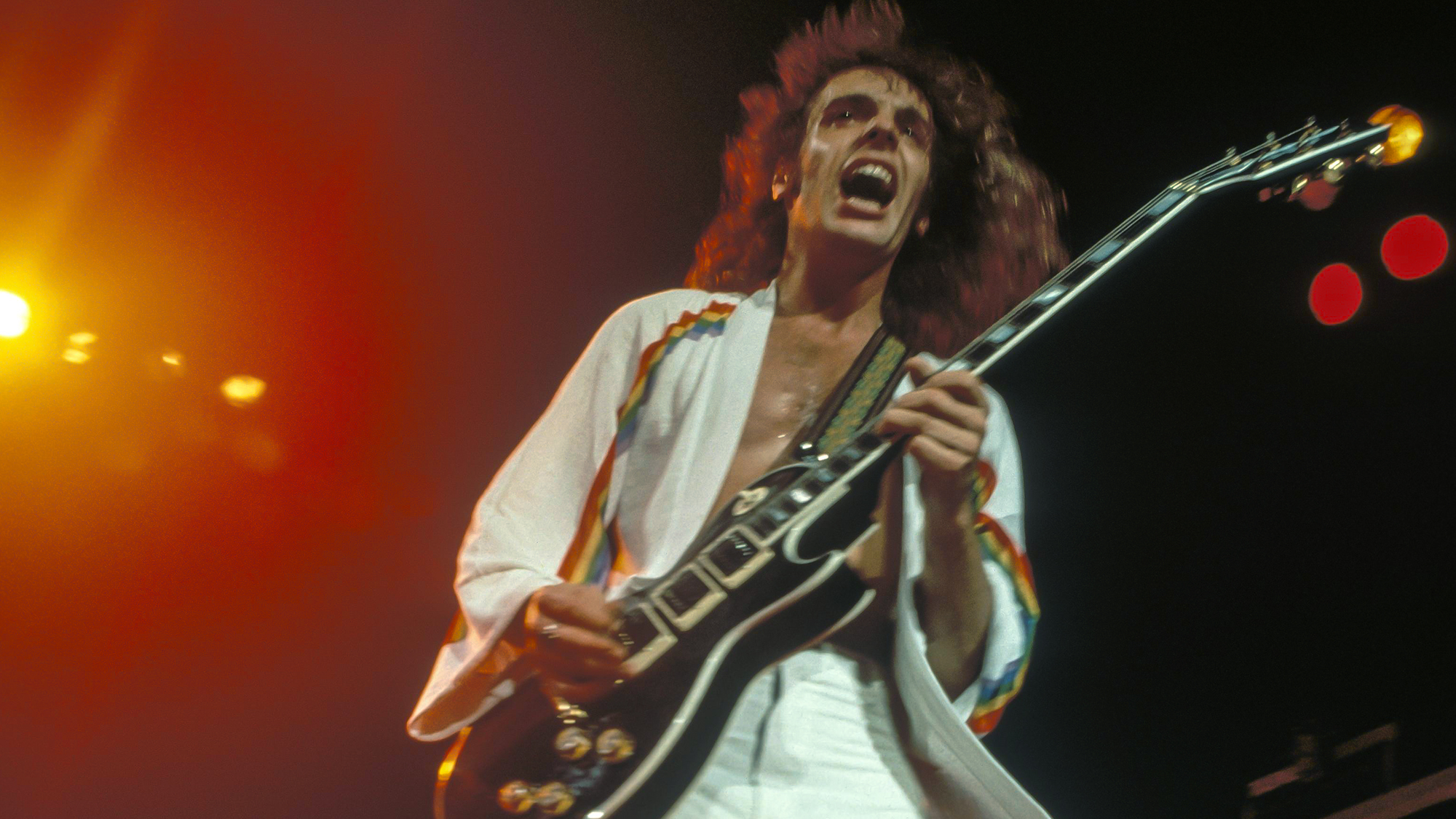"The police were banging on the door. The roadies held them shut until we’d finished the take." Ritchie Blackmore, Roger Glover and Ian Paice on the creation and legacy of Deep Purple's "Smoke on the Water"
“I didn't think it would be a hit," Blackmore says. "It was just something that Ian and I banged out on the spur of the moment.”

Deep Purple's 1973 hit "Smoke on the Water" is more than the band's biggest song — it's a guitar anthem that inspired countless budding musicians to pick up an electric guitar. Since its release, it's become one of the most iconic riffs in rock history, been forbidden from being played in numerous guitar shops, and grown into a cultural phenomenon.
Evidence of that last claim can be found in the very city where the song was recorded in 1971, two years prior to its release.
“The last time we were in Montreux, there were signs by the lake reading: 'No smoking on the water,'” Deep Purple bassist Roger Glover tells The Guardian. The band actually played a very literal version of the song during a recent visit to the Swiss city, which nestles at the foot of the Alps.
The song's creation has become part of rock and roll folklore. As has been documented many times, Deep Purple were set to record their 1972 album, Machine Head, at the Montreux casino's theater in December 1971 after it closed down for the winter. But at the last concert of the season, featuring Frank Zappa and the Mothers of Invention, an audience member fired a flare gun that set the ceiling on fire and burned down the venue.
Frank Zappa said, ‘I don't want people to panic,’ and with that, he jumped out of the window! The whole place burned down in 20 minutes.”
— Ritchie Blackmore
“It was pretty horrendous and frightening,” Blackmore recalls in an episode of Tales From the Tavern on his YouTube channel. “We were watching Frank, and we all had to get out of the building. Frank turned around and said, ‘I don't want people to panic,’ and with that, he jumped out of the window! The whole place burned down in 20 minutes.”
With nowhere to record, Deep Purple settled into a local Montreux theater, the Pavilion, which is where "Smoke on the Water" came into being with its famous guitar riff.
As Blackmore recalls, his goal was to keep things simple.
All the latest guitar news, interviews, lessons, reviews, deals and more, direct to your inbox!
“I was always looking for a very simple riff to play,” he says. “I'd heard the Kinks play ‘You Really Got Me’, and the Stones were playing ‘Satisfaction,’ so I felt there was a commercial element of, if you want to be heard, you have to keep it simple.”
Although the riff is written in the blues scale and harmonized in parallel fourths, Blackmore claims he wrote it by tapping into his love of classical music. According to the guitarist, the famous passage is an interpretation of Ludwig van Beethoven's Symphony No. 5. "I owe him a lot of money," the guitarist says. To perform it, he cast aside his guitar picks and opted to fingerpick instead.
Deep Purple were tracking the session using the Rolling Stones' Mobile Recording Unit — a storied piece of gear immortalized in the song's lyrics — when they had unexpected visitors.
I was always looking for a very simple riff to play. There was a commercial element of, if you want to be heard, you have to keep it simple.”
— Ritchie Blackmore
“The police were banging on the door because we were making so much noise,” Blackmore says with a smile.
They completed the recording with assistance from their road crew. As Paice explains to The Guardian, “The roadies managed to hold the doors shut until we’d finished the take.”
“Luckily, we had a master take, and that was given to Ian Gillan to write the lyrics,” Blackmore continues.
“I didn't think it would be a hit, it was just something that Ian and I banged out on the spur of the moment. We were just having fun.”
However, the version of the track that made it onto the band’s sixth album, Machine Head, wasn’t the one they sent to the label.
“Warner Bros. in Los Angeles loved it but said it was too long for the radio, so unbeknownst to us, one of their engineers cut it down to four minutes,” Paice recalls. “The rest is history, as they say.”
Meanwhile, the band had begun playing the song on tour, as captured on the live album Made in Japan, and developed it even further.
“We’d been playing it for a year and had found all these little nooks and crannies to explore,” Paice explains. “The audience did the hand claps in time with the riff. Ian had trouble hearing through the monitors that night in Osaka, so at the end he says that wonderful line: ‘I want everything louder than everything else!’”
“Montreux has always been special to us because of what happened,” Glover concludes. “I never get tired of playing the song. Someone once said it’s like having a button that you press to make the audience go nuts.”
Meanwhile, Simon McBride, the band’s current lead guitarist, says many guitarists play the riff incorrectly and has revealed why Blackmore’s unique approach to the riff was so fundamental to its success.
And while we're on the subject of classic rock riffs, Dweezil Zappa has lamented the lack of riffs in modern music.
And in related news, Candice Night has also spoken about Blackmore’s ongoing health issues and when he can be expected to grace the stage again.
A freelance writer with a penchant for music that gets weird, Phil is a regular contributor to Prog, Guitar World, and Total Guitar magazines and is especially keen on shining a light on unknown artists. Outside of the journalism realm, you can find him writing angular riffs in progressive metal band, Prognosis, in which he slings an 8-string Strandberg Boden Original, churning that low string through a variety of tunings. He's also a published author and is currently penning his debut novel which chucks fantasy, mythology and humanity into a great big melting pot.




